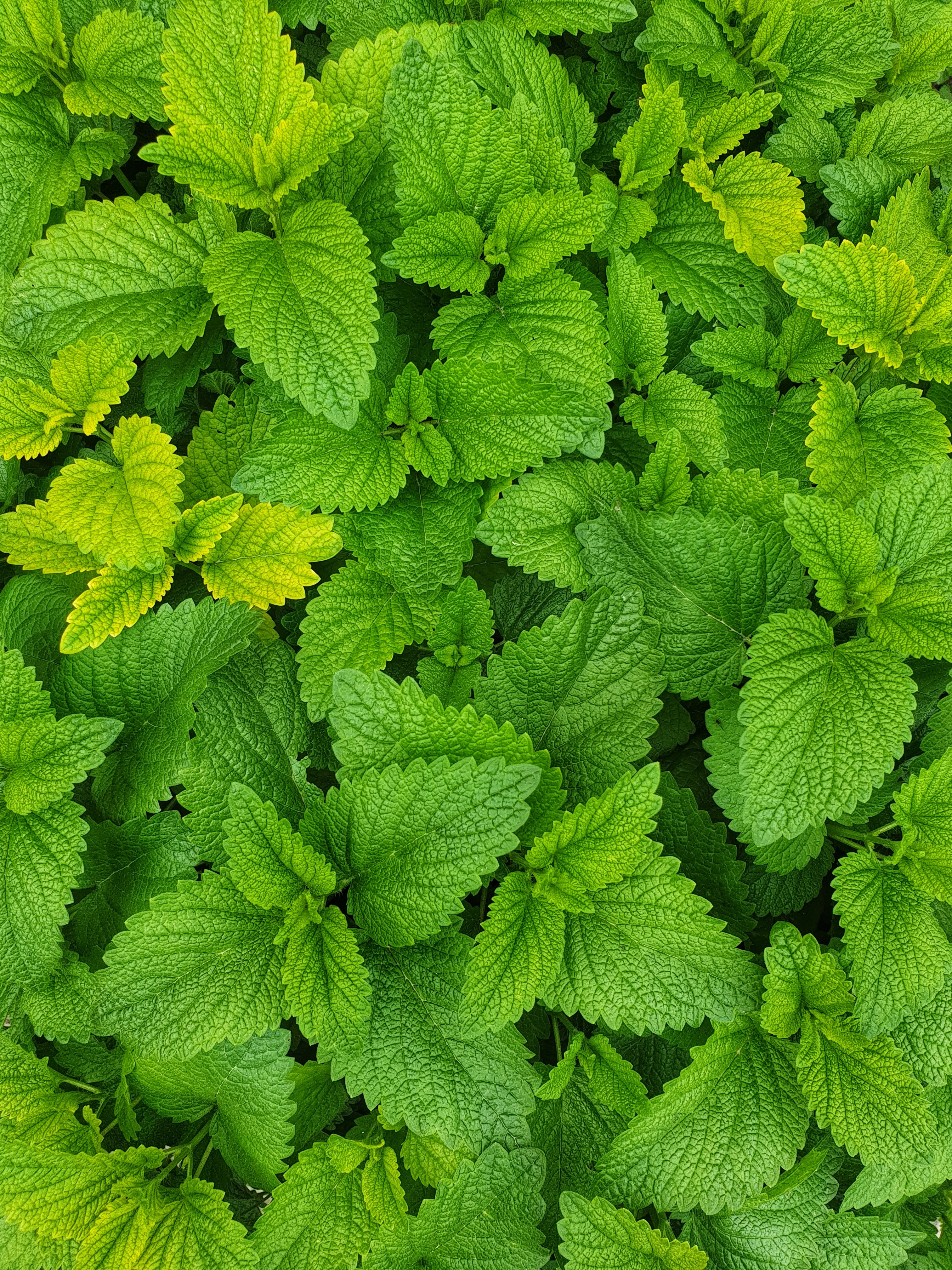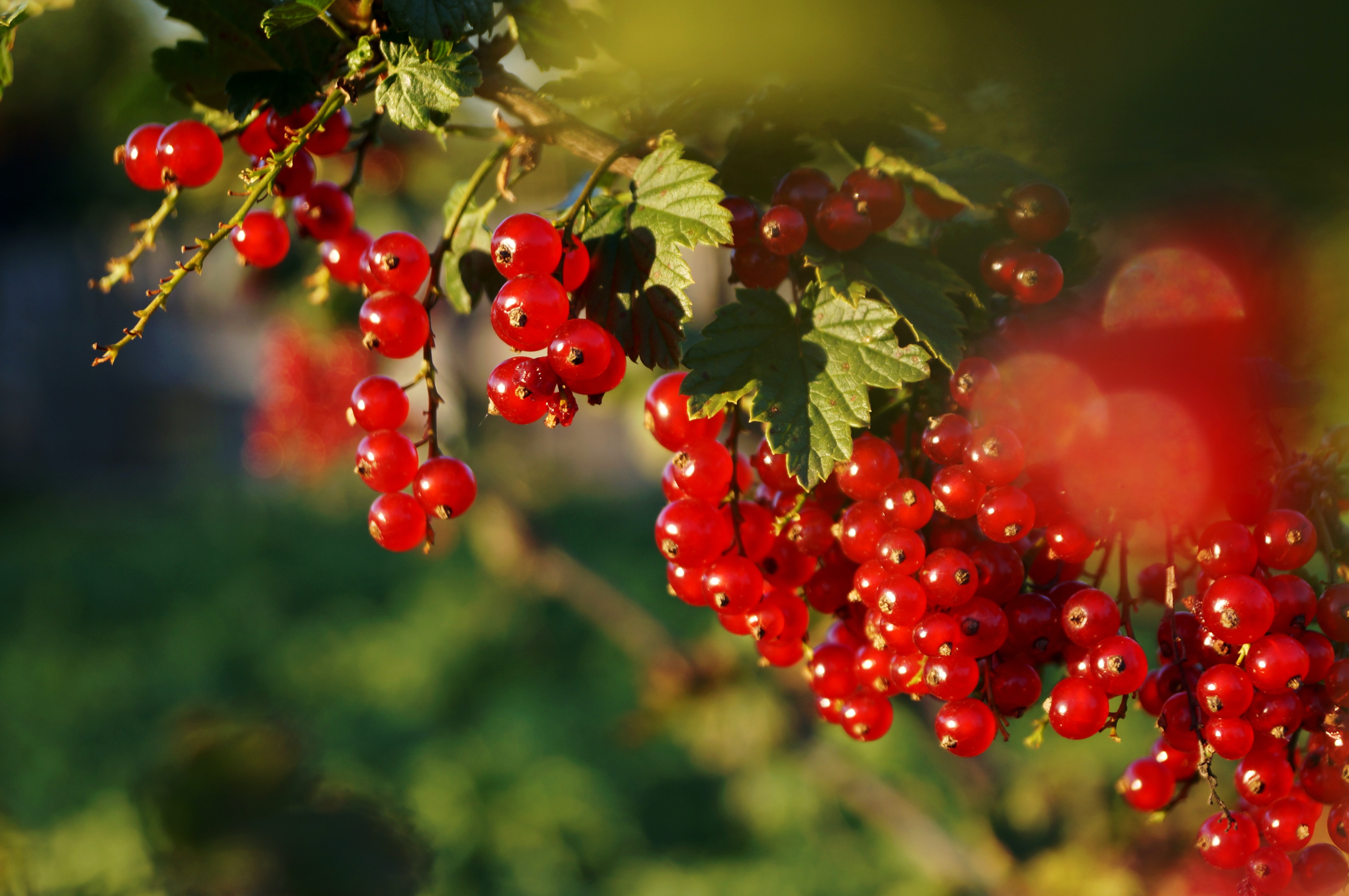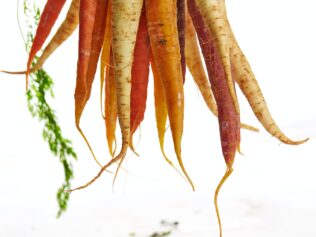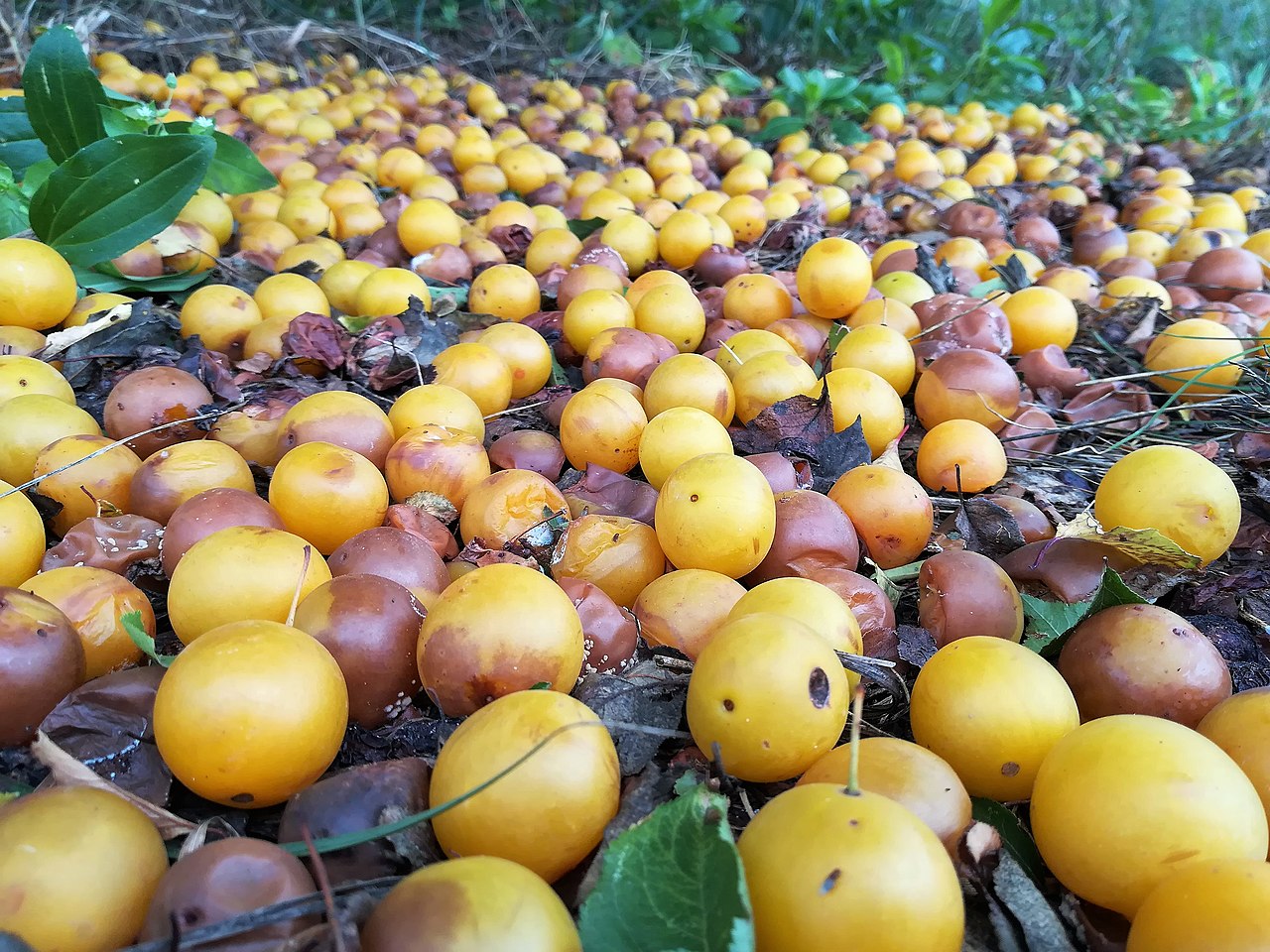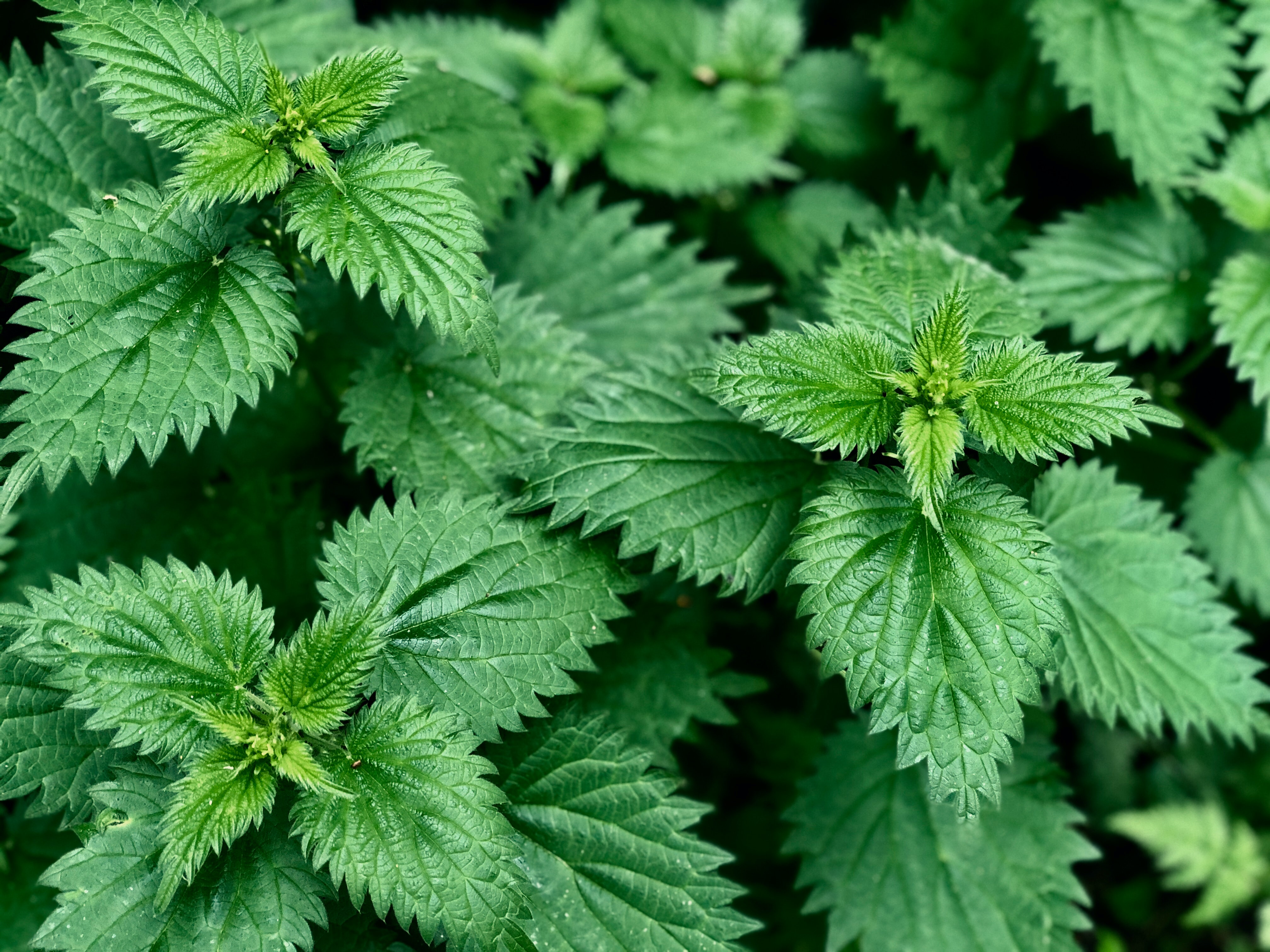
Mint is a common plant, seemingly plain as they come, but the whole genus (Mentha) is full of species and hybrids that aren’t easy to distinguish from one another and offer a wide range of sensual and culinary experiences. In Poland, there are a few species of mint that grow in the wild. Field mint (Mentha arvensis) is usually found in fields or on fallow lands and tastes like peppermint, maybe a little milder and less peppery. Its flavour is similar to that of water mint (Mentha aquatica), a pleasantly aromatic species mainly found along waterways. It also shares a lot with peppermint, since it is one of its ancestors. A rare find is pennyroyal (Mentha pulegium), which mostly grows in large river valleys in southern Europe, while horse mint (Mentha longifolia) often grows in southern Poland, near streams or in damp brush. It has a gentle, sweetish smell and tastes like spearmint.
Mentha spicata, Latin for spearmint, also called green mint, is usually planted in gardens. You probably know its name from chewing gum wrappers. Some adore its tender taste, others prefer the spicier tones of peppermint (Mentha piperita), a natural hybrid of spearmint and water mint. Apple mint (Mentha suaveolens) is also worth mentioning as a commonly-grown species – it has pretty, notched leaves, used for decorating food in restaurants, but its taste is bland. More extravagant species can also be bought, such as chocolate- or strawberry-smelling mint.
Mint is rich in essential oils and other aroma compounds. The most popular one is menthol, but not all species contain it. The plant is used as a remedy for digestive problems, it also sustains bile production and has a diastolic, antiseptic effect. Mint infusions are one of the most commonly used herbal treatments in popular medicine. However, they should be avoided during pregnancy.
Healing, nourishing, refreshing!
Knowledge about using mint leaves and stems for culinary and medical purposes has been transmitted from generation to generation all around the world. In British cuisine, lamb is served with mint sauce. In many countries, mint tea is especially useful during heatwaves – it is drunk in the summer because of its cooling qualities. Moroccan tradition requires mint tea to be served in small cups, with the addition of green tea and a sizeable amount of sugar. The most important herb in Georgian cuisine is pennyroyal, called ombalo. It is sold in bunches at the local markets and added to pkhali, a traditional appetizer. When someone loses their sense of purpose in life, Georgians say that they ‘didn’t have enough ombalo’.
Although many different herbs are easily available in Poland, traditional recipes for such popular dishes as pierogi rarely include wild plants and herbs. This is because, historically speaking, Polish dumplings were considered a festive and lavish food, while herbs were associated with poverty and eaten when there wasn’t enough grain. The only exception from this rule (apart from bilberries) is mint, a common ingredient used to make the filling for pierogi ruskie. Polish potato dumplings with mint are a speciality of the whole Lublin region, as well as the north-eastern part of Subcarpathia (between the cities of Rzeszów and Krosno).
The recipe for this type of pierogi is quite standard, the only difference is the filling enhanced with mint. But which species should be used? Some people grow green mint to prepare the dumplings, others gather horse mint. A herbalist from Bratkówka near Krosno told me that when she was a child, three kinds of mint were grown: one for pierogi, one for delicious broth and one for delicious tea. The latter was peppermint. In the region of Babia Góra, field mint and horse mint leaves were added to a special pottage called warmuz, alongside nettle and white goosefoot leaves.

Pierogi ruskie with mint
Filling ingredients: 1kg potatoes 500g quark/cottage cheese (you can find this in a local Polish shop as ‘twaróg’) 2 large onions Salt, pepper Horse mint or spearmint leaves collected from the top growth of 10 stems
Dough ingredients: 500g wheat flour 1 egg yolk (optional; the dough can also be prepared without it) 1 flat tbsp warm water 1 flat tsp salt
To prepare the filling, dice the onions and chop the mint, separately. Peel and boil the potatoes. Mash them with the quark/cottage cheese while they are still warm, but not scorching hot. Sauté the onions with butter until they are caramelized. Mix the ingredients, add salt and pepper. Let the mix cool down to room temperature (it’s best to prepare the filling a few hours beforehand to let it dry out a little).
To prepare the dough, place the flour in a large bowl and add the egg yolk (if using), salt and butter. If the dough is made without fat, it is easier to roll out, but it may tear easily – the choice belongs to you. Mix everything together. Slowly pour warm water into the mix while kneading it with the other hand. Knead the dough for 10 minutes, let it rest under a cloth for another 10 minutes.
Sprinkle the countertop with flour, roll out the dough thinly. Use a cup or a glass to cut out circles, lay some filling on top of each piece of dough and pinch the edges together evenly. Put a few pierogi at a time into salted, boiling water and take them out approximately five minutes after they rise to the surface (cooking time may vary depending on the thickness of the dough, the size of the pot and the number of pierogi).
Translated from the Polish by Joanna Piechura


